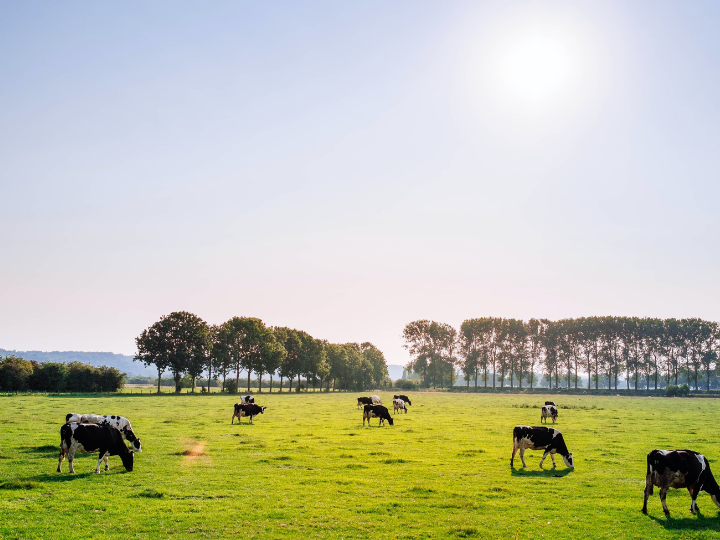by Julia Dahm
As EU countries phase out coal, they support their affected regions in transitioning economically. Now it appears that such a regional policy to cushion climate action is needed elsewhere, too: To defuse social dynamite in rural areas, Europe must prepare its cow phase-out.
In Ireland, a bizarre piece of news has been recently making waves: As first reported by the Irish Independent, the government is considering culling up to 65,000 dairy cows every year in an attempt to reach the country’s climate targets.
This would mean that dairy cows, usually kept alive for around 4.5 to six years until their productivity fades, would be culled en masse and ahead of time – just to quickly bring down emissions. Almost 40% of Ireland’s greenhouse gas emissions come from the agricultural sector, mostly driven by the methane emitted by cows.
Such a move would bring a sudden socio-economic disruption to the affected regions for which farmers, who made investments based on a certain herd size, had no means of preparing.
It can clearly be seen in the Netherlands how socially explosive this type of policy decision can be.
There, too, the government needs to significantly cut the number of livestock – in this case, to reduce another pollutant, nitrogen, rather than greenhouse gas emissions, and comply with EU rules.
But attempts to do so at the eleventh hour have brought about severe protests – and even riots from farmers, leading one agriculture minister to resign, and the farmers’ protest party BoerBurgerBeweging (BBB) to score big election wins.
The rest of the EU can and must learn from the Dutch and Irish examples. As climate and environmental action become more urgent and targets stricter, many regions will need to reduce their livestock numbers sooner or later.
To be clear, this does not mean there should be no more livestock – animals, and their by-products like manure, play a key role in the agri-food system. But it does mean that farms need to become smaller, or that many might even have to close down.
Clearly, this is uncomfortable to admit, but sweeping it under the rug until it is too late will only make things worse. To defuse the social dynamite this issue holds, the farmers and regions in question need long-term planning security and support.
For the energy sector, approaches like this already exist.
Think of the coal phase-out policies most EU countries have been implementing.
Apart from Bulgaria, all EU countries have committed to an end date for coal, and many of these governments, flanked by EU support, have introduced measures to help workers retrain and regions develop new industries.
Of course, this does not mean that all exit dates are sufficiently ambitious, nor that all support programmes are successful. But the general approach should be applied to livestock farming, too:
Be transparent well in advance about how much fewer animals there will need to be by a certain date, then start preparing the most affected regions for the structural transformation.
The good news is that the EU – at least in theory – has the means to provide support to agricultural regions in transition.
After all, the bloc’s two largest policies in terms of budget deal with rural areas and regional support, respectively, the Common Agricultural Policy (CAP) and the Cohesion Policy.
By combining financial and policy resources from these two areas, the EU could develop a fund to support livestock-heavy regions the way it already does for many coal regions.
Of course, there are caveats. The EU’s budgetary framework is decided for seven years at a time, and such a fund could likely only be implemented in the next budgetary period starting from 2028.
And many think that the range of tasks put on the shoulders of the CAP and the Cohesion Funds is too vast already.
Nevertheless, for a policy focused on the viability of farms and rural areas and one focused on boosting regional cohesion and reducing disparities across the bloc, it should be a priority to make the EU’s cow phase-out a success.
*first published in: Euractiv.com




 By: N. Peter Kramer
By: N. Peter Kramer

